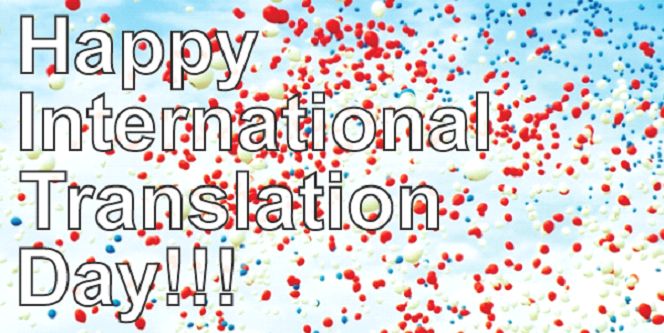By Sarah-Claire Jordan

Every year on September 30th, translators all around the world get to have a day where they are honored and celebrated for the amazing work they do. It’s called “International Translation Day”, and it has been around since 1953, when FIT, the International Federation of Translators, was formed. It wasn’t recognized as an official international day for celebrating translators until 1991, however. Since then, FIT has been organizing and spreading the word about it, complete with a competition to choose a theme and a poster design for each year.
The reason why September 30th is the date that was chosen back in 1953 for this international celebration is that happens to be the same day as the feast of St. Jerome. He was a very important Bible translator who came to be the patron saint of translators. Of course, the religious aspect of this is not important or discussed really, and St. Jerome is just used as a symbol of translators and translation. Since 1991, there has been an increased effort to make sure International Translation Day is promoted in every country, regardless of the official or dominant religion.
Anyone is invited to celebrate, but especially the organizations that are also members of FIT, like the American Translators’ Association, or ATA, for example. All of the member organizations are eligible to propose a theme for the year’s celebration, and the FIT chooses the one they think is the best. A similar poster design competition takes place as well, with the winning design being offered as a free download on the FIT website. The idea is not to make money, really, just to create more awareness of the important work that translators do, especially in this age of globalization.
While interpreters do have their own celebration in the U.S. on May 1st, and other countries probably have a similar day, they are also included in the festivities. Interpreters and translators both do extremely important work with the same goals, just with different mediums. Interpreters use their voices and often interpret in real time, while translators don’t have the added pressure of rendering a translation of what someone is saying in the moment. That isn’t to say that translation is easier than interpretation; they are simply different, and they both should be recognized and celebrated.
This year’s theme is “Connecting Worlds,” which is very fitting. It was proposed by the American Translators’ Association, and means the celebrations will focus on how translators and interpreters help everyone to break down barriers between countries and even regions to allow for the sharing and spreading of knowledge on a variety of topics. The more we all share as a world, the more we can do in terms of improving the conditions we live in, whether they be economic, environmental, legal, or any other sector. Those who work in translation and interpretation are truly gatekeepers of all the information that isn’t in our native language. Without them, we would never learn how other societies solve problems and innovate, and we would not be as connected as a world.



